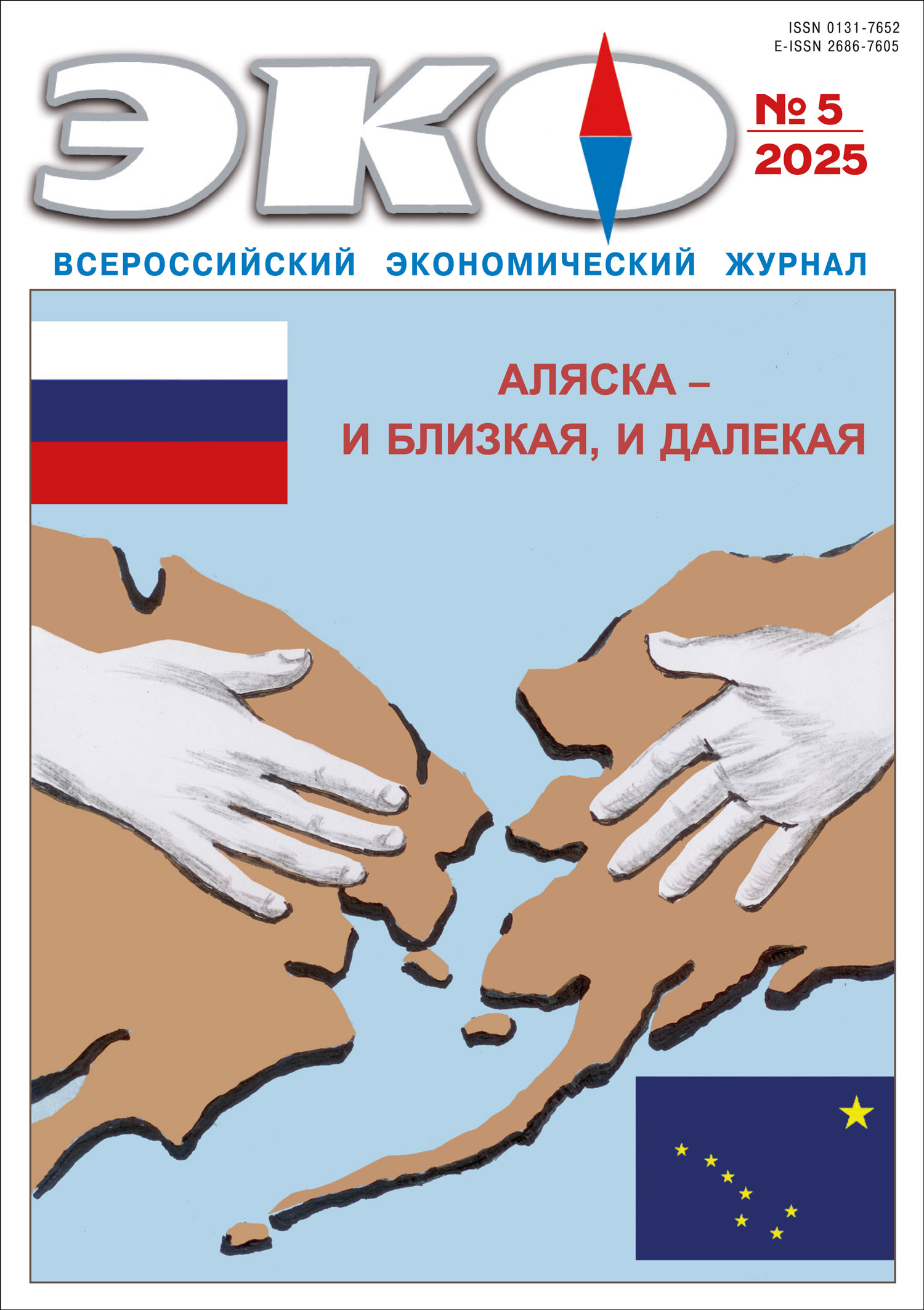ECONOMY SECTORS AND MARKETS
Privatization and Horizontal Integration: Impact on Efficiency of Russian Airports
Published 2025-10-06
Keywords
- airports; aviation infrastructure; efficiency; airport privatization; data envelopment analysis; horizontal integration; airport holdings
How to Cite
1.
Zubenko А. Privatization and Horizontal Integration: Impact on Efficiency of Russian Airports. ECO [Internet]. 2025 Oct. 6 [cited 2025 Nov. 25];55(5):222-38. Available from: https://ecotrends.ru/index.php/eco/article/view/4907
Abstract
The paper examines the impact of horizontal integration, that often happens during airport privatization, on airport efficiency. The author outlines the legal peculiarities of airport privatization in Russia, which helps put forward an expanded understanding of privatization. A first assessment of efficiency in 28 Russian airports employing the data envelopment analysis method based on 2019 reports (before the pandemic and sanctions restrictions) is presented. The paper analyzes factors affecting efficiency and the risks of limiting competition in the case of airport governance rights concentration. Contrary to studies of foreign airports, it is proved that being part of an airport holding and potential airport competition between airports in the Russian Federation do not significantly affect their efficiency.References
- Брусиловский В.Е., Григорьев Л.Э., Менар К., Шаститко А.Е. Проблемы регулирования цен и тарифов на услуги естественных монополий (на примере аэропортов федерального значения). Бюро экономического анализа. М.: ТЕИС, 2001. 240 c.
- Волкова Л.П. Управление деятельностью аэропорта. Часть 2. Организационные основы управления деятельностью аэропортов. М.: МГТУГА, 2007. 106 с.
- Зубенко А.Н., Курдин А.А. Обоснованность регулирования сборов и тарифов на услуги в аэропортах // Современная конкуренция. 2023. Т. 17. № 5. С. 19–40. DOI: 10.37791/2687–0657–2023–17–5–19–40
- Степашин С.В. Анализ процессов приватизации государственной собственности
- в Российской Федерации за период 1993–2003 годы (экспертно-аналитическое
- мероприятие). М.: Издательство «Олита», 2004. 186 с. (In Russ.).
- Шаститко А.Е., Павлова Н.С. Оценка границ рынка услуг аэропортов: основания для дерегулирования тарифов // Управленец. 2023. Т. 14. № . 5. С. 2–15. DOI: 10.29141/2218–5003–2023–14–5–1
- Ярошевич Н.Ю., Дубровский В.Ж. Государственное регулирование тарифов и сборов аэропортов: провалы российского законодательства и приоритеты развития // Journal of new economy. 2015. № 4 (60). С. 112–119.
- Adler, N., Liebert, V. (2014). Joint impact of competition, ownership form and economic regulation on airport performance and pricing. Transportation Research Part A: Policy and Practice. Vol. 64. Pp. 92–109. DOI: 10.1016/j.tra.2014.03.008
- Adler, N., Ülkü, T., Yazhemsky, E. (2013). Small regional airport sustainability: Lessons from benchmarking. Journal of Air Transport Management. Vol. 33. Pp. 22–31. DOI: 10.1016/j.jairtraman.2013.06.007
- Assaf A.G., Gillen D. (2012). Measuring the joint impact of governance form and economic regulation on airport efficiency. European Journal of Operational Research. Vol. 220. No. 1. Pp. 187–198. DOI: 10.1016/j.ejor.2012.01.038
- Bel, G., Fageda, X. (2010). Privatization, regulation and airport pricing: an empirical analysis for Europe. Journal of Regulatory Economics. Vol. 37. Pp. 142–161. DOI: 10.1007/s11149–009–9110–7
- Benítez, R., Coll-Serrano, V., Bolós, V. J. (2021). deaR-shiny: an interactive web app for data envelopment analysis. Sustainability. Vol. 13. No. 12. Pp. 6774. DOI: 10.3390/su13126774
- Bettini, H. F. A. J., Oliveira, A. V. M. (2016). Two-sided platforms in airport privatization. Transportation Research Part E: Logistics and Transportation Review. Vol. 93.
- Pp. 262–278. DOI: 10.1016/j.tre.2016.06.003
- Bilotkach, V. et al. (2012). Regulation, privatization, and airport charges: panel data evidence from European airports. Journal of Regulatory Economics. Vol. 42. Pp. 73–94. DOI: 10.1007/s11149–011–9172–1
- Doganis, R. (2005). The airport business. Routledge. 245 p. DOI: 10.4324/9780203977316
- Forsyth, P., Niemeier, H. M., Wolf, H. (2016). Airport Alliances and Multi-Airport Companies: Implications for Airport Competition in Airport Competition: the European Experience. Routledge. Pp. 339–352. DOI: 10.4324/9781315566481
- Gillen, D. (2011). The evolution of airport ownership and governance. Journal of Air Transport Management. Vol. 17. No. 1. Pp. 3–13. DOI: 10.1016/j.jairtraman.2010.10.003
- Graham, A. (2020). Airport privatisation: A successful journey? Journal of Air Transport Management. Vol. 89. P. 101930. DOI: 10.1016/j.jairtraman.2020.101930
- Graham, A. (2023). Managing Airports: An International Perspective. London: Routledge. 600 p. DOI: 10.4324/9781003269359
- Iyer, K. C., Jain, S. (2019). Performance measurement of airports using data envelopment analysis: A review of methods and findings. Journal of Air Transport Management. Vol. 81. Pp. 101707. DOI: 10.1016/j.jairtraman.2019.101707
- Oliveira, G. P. (2013). Abuse of dominance in the airport sector. Journal of Transport Literature. Vol. 7. Pp. 8–51. DOI:10.1590/S2238–10312013000100002
- Oum, T. H., Yan, J., Yu. C. (2008). Ownership forms matter for airport efficiency: A stochastic frontier investigation of worldwide airports. Journal of Urban Economics. Vol. 64. No. 2. Pp. 422–435. DOI: 10.22004/ag.econ.207604
- Thomas, N., Jha, K. N. (2022). Structural efficiency assessment of regional airports: Lessons from India. Utilities Policy. Vol. 79. Pp. 101449. DOI: 10.1016/j.jup.2022.101449
- Yu, C. (2023). Airport Performance-a multifarious review of literature. Journal of the Air Transport Research Society. Vol. 1. No. 1. Pp. 22–39. DOI: 10.59521/E7E8098D7A835864

